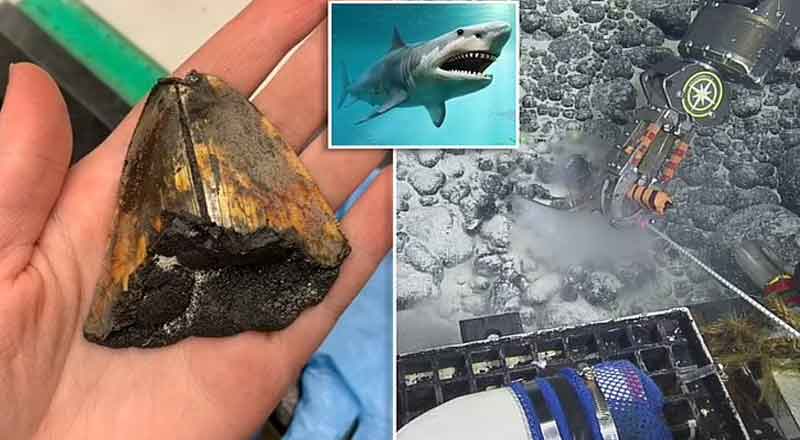Unearthing Wealth from the Depths of the Ocean
Imagine the seabed holding treasures that could power a nation’s economy for a decade. Off the coast of Japan’s Minami-Tori-shima Island, such a treasure trove has been discovered—a vast field of manganese nodules containing cobalt, nickel, and copper worth an estimated $26 billion. These minerals, essential for cutting-edge technologies like electric vehicle (EV) batteries and jet engines, are now poised to reshape Japan’s industrial landscape. Surprisingly, these riches were found near an unusual marker: the fossilized teeth of the prehistoric Megalodon shark. This discovery blends history, technology, and economic opportunity, promising to redefine resource extraction in the coming years.
Minerals on Ancient Teeth
The remarkable find was made during a survey conducted by the Nippon Foundation and the University of Tokyo. Situated 5,700 meters below sea level, the manganese field includes a staggering 610,000 metric tonnes of cobalt and 740,000 metric tonnes of nickel. Together, these minerals are valued at over $26 billion, based on current market prices of $24,300 per metric tonne for cobalt and $15,497 per metric tonne for nickel.
Interestingly, these valuable deposits were found clinging to the teeth of Megalodons—giant sharks that roamed the oceans millions of years ago. Over time, fish bones carrying trace metals settled on the seabed, creating dense layers of these minerals around the fossilized remains.
Strategic Importance of Cobalt and Nickel
Cobalt and nickel are indispensable for modern industries. They play a critical role in the production of EV batteries, chemical processing, gas turbines, and jet engines. With global demand for these minerals surging, this discovery offers Japan a unique opportunity to secure a domestic supply chain. This could reduce reliance on imports, strengthen the nation’s manufacturing capabilities, and boost economic growth.
Sustainable Extraction Plans
Despite the excitement surrounding the discovery, experts are approaching the extraction process with caution. Professor Yasuhiro Kato from the University of Tokyo emphasized the importance of minimizing environmental impact. A plan is in place to begin mining operations by 2025, with an initial goal of extracting three million tonnes annually using overseas mining vessels.
The University of Tokyo anticipates that the research and subsequent extraction will establish a robust domestic supply chain, linking resource mining with manufacturing. This approach aims to ensure long-term sustainability and economic resilience while preserving the marine ecosystem.
A New Era for Japan’s Economy
The discovery near Minami-Tori-shima could not have come at a better time for Japan, a country heavily reliant on mineral imports. By tapping into these underwater reserves, Japan can secure critical resources for its growing EV and high-tech industries, potentially saving billions in import costs. Moreover, the development of this domestic supply chain could position Japan as a global leader in sustainable mining technologies.
A Wealth of Opportunity Beneath the Waves
The discovery of $26 billion worth of minerals attached to Megalodon teeth is more than a scientific marvel—it’s a lifeline for Japan’s economy. As the world shifts towards cleaner energy and advanced technologies, securing cobalt and nickel supplies is crucial. By embracing sustainable mining practices, Japan has an opportunity to balance economic growth with environmental stewardship. This underwater treasure is not just a boon for Japan but a glimpse into the untapped potential of the Earth’s deep seas—a final frontier holding secrets that could redefine the future of resource extraction.
(With inputs from agencies)





